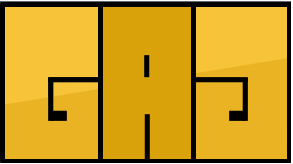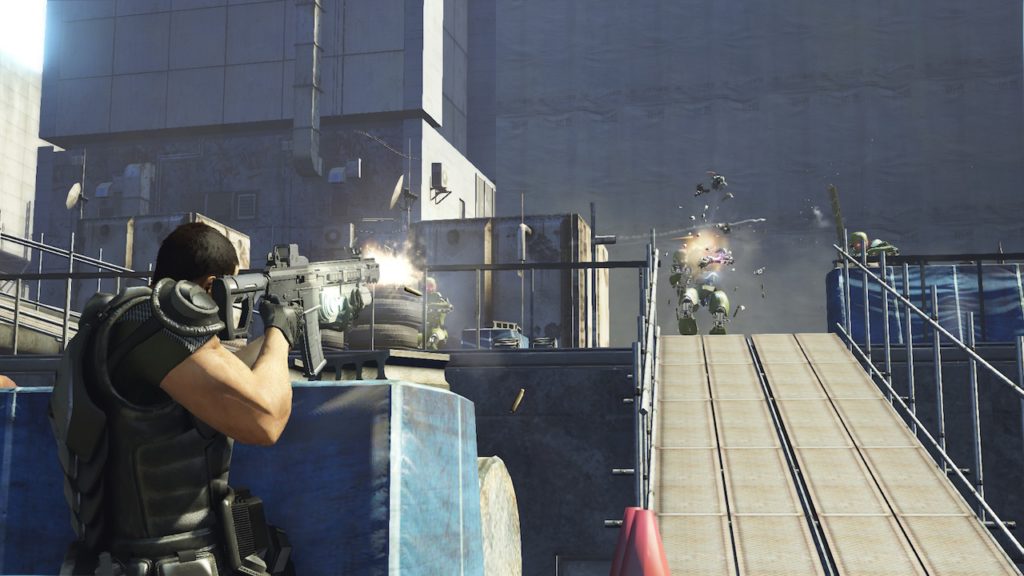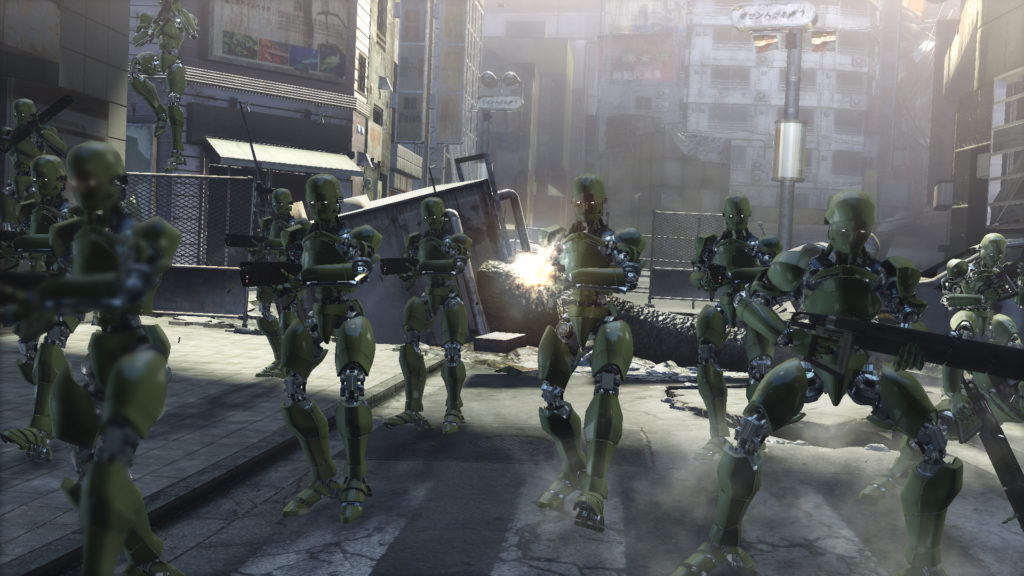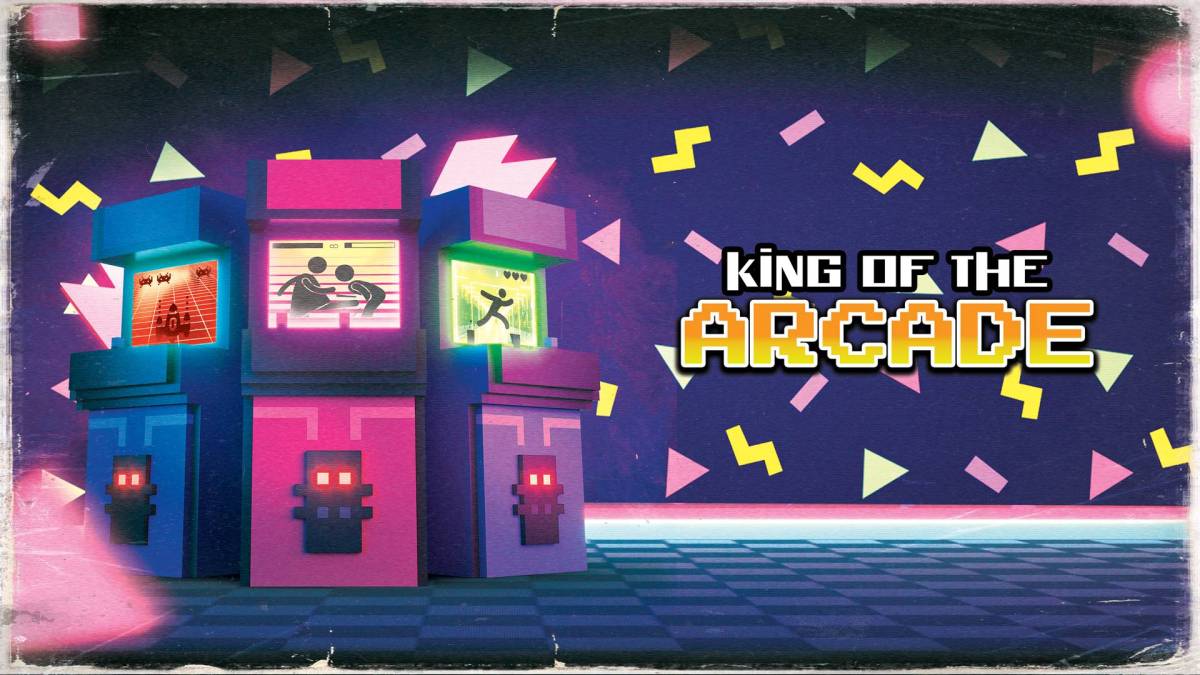
Platforms: Playstation 3 and Xbox 360 (reviewed)
“Where does the machine end and humanity begin?” This is the question posed to you by Sega on your journey through Binary Domain. You’ll find the answer to this in much less philosophical sense than the question poses itself as. The difference between the two is what you will be shooting and what you won’t be.
The story won’t be earning Binary Domain any awards. It’s a simple story about one big corporation making robots that look and act so human, the robots, dubbed Hollow Children, themselves are unaware of their assembly line roots. Your job, along with a revolving cast of other other soldiers, is to bring the head of the corporation in for questioning at any cost. Get in, get out – simple enough, right? Of course not, otherwise there wouldn’t be much in the way of “game” here. On your way to pick up Mr. Amada, you’re going to be confronted with a ton of robots to blow up. From the small security drones to gigantic, multi-storied building sized monstrosities, you’re up against a heavy amount of resistance.
Dealing with some of the games characters, either a squad member or a random passerby, is either the games strongest suit or a rather glaring flaw, depending on your perspective of the voice acting. The game takes place in Japan and your squad consists of members from Britain, China, France, and Japan. Each character you encounter, from their mannerisms to their accent, rides on every stereotype ever conjured up for their nationalities. I lean on the side of it being done tongue in cheek mostly due to the accents. The Japanese ones in particular come across as so grossly exaggerated in some spots, it’s hard to imagine them not being done in humor.
The game’s combat is, while not particularly robust, surprisingly fun. While nothing in particular is special about the actual movement and shooting mechanics, the fun comes in how you take down your robotic adversaries. Parts fly off the areas you shoot on them. Shoot out a robot’s legs and they’ll come crawling at you to try to finish the job. Pop off their heads and they’ll turn on the nearest target, which often ends up being another robot. Blow off the arm with the gun in it and they bend over to pick up the gun with their remaining arm.
While the smaller battles have a tense feeling to them with the robots trying to flank you with a reasonably effective AI, the boss fights might have your palms sweating for a totally different reason. Most of these bosses are huge. While it’s not always difficult to figure out the weak spot, as the game is kind enough to highlight it for you, actually hitting the thing can prove troublesome. The bosses will often move around quickly to avoid leaving their glaring weakness open to you. More than a few times, I’ve found myself relying on my sidearm as my ammo ran thin from my poor shooting. Most of these fights have their own stages, as blowing up one part of the boss will have it switching tactics and bringing a new weak spot to exploit.
While you’re never alone in these fights, you’re squad members often feel totally overwhelmed by the any sort of assault. You can issue them basic commands mid combat, but the result is often them continuing their previous “strategy,” no matter how ineffective it was. There’s a trust meter you build with each of your squad members through your actions in combat and conversation choices with them, but the trust meter seems to have little function as no matter how high my trust level was with a character, their resulting responding actions to any mid battle commands I gave them were often, as mentioned previously, ignored. So while you’re never alone in combat, you’ll find yourself handling the bulk of the forcible dismantling of the robots yourself.
When you want to issue these oft-ignored commands, you have the choice of holding down a button to bring up some options (the same holds true for the conversation bits in the game) or hooking up a headset and speaking directly to them. The amount of words and vocal commands it’s capable of recognizing is impressive, the actually ability for it to recognize them is considerably less impressive. There is a fairly robust speech recognition testing mode in the options, but your time spent learning the commands could be better spent actually playing the game and just using the button prompts.
One aspect I wish I could cover, well, at all is the multiplayer. I’ve gone on Xbox Live multiple times during different times of day (even in the wee morning hours in the hopes of getting some Japanese players) with either no one at all online or not enough people to start a match. The only mode I can even speak of is the Invasion mode, which plays much like a Rainbow Six Terrorist Hunt or Gears of War Horde mode. While there seems to be a bit of potential there, I was unable to make it beyond the first four rounds by myself, so passing any sort of judgment on it, or any of the multiplayer for that matter, isn’t really fair.
Graphics – Sometimes the characters shine through to a fairly impressive level, most times they fall a bit flat. The scenery is nice enough looking, if a bit generic.
Sound – Voice acting ranges from serviceable to nearly top notch to (un)intentionally hilarious. Soundtrack adds to the more intense moments in the game. Sound effects are really where this category shines though.
Gameplay – Shooting and movement, while not exceptional, do what they need to. The squad voice command option is a bit of a novelty, but the speech recognition isn’t where it needs to be for it to be used in lieu of using the buttons to issue commands.
Story – A mish-mash of I, Robot and Terminator plots with a brushing of squad interaction riddled with nearly every racial cliché imaginable.
Replay Value – Unless you REALLY want to play the harder difficulty levels, this is a mostly “one and done” experience. Multiplayer has the potential to add some legs to it, but with almost no community to speak of two months after release, that potential is quite ethereal at this point.
Overall Length – For a single playthrough, set aside around eight hours for yourself. Going through on a harder difficulty and making sure you get all the collectibles can extend the game a few hours. Multiplayer is, unfortunately, a seeming non-factor.
While I seem to have been a little harsh on this game, I still recommend trying this out if you have a weekend to kill. While it has its flaws and failings, Binary Domain succeeds in enough areas to at least be on your radar. Go in expecting a fairly humorous, fun romp and throw away all the philosophical crap they try to mix in and you shouldn’t leave the experience questioning your humanity.








